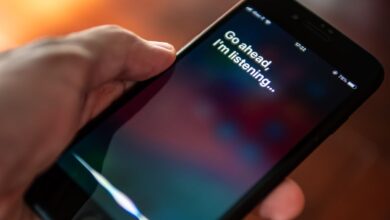How Smartphones Use Generative AI?

In the fast-growing world of Artificial Intelligence, the usage of Generative AI in Smartphones has also come to reality. Generative AI, tech companies large and small see that changing. Generative AI refers to artificial intelligence models trained on large volumes of data that create content when you provide a prompt. It’s different from other forms of AI that have played a crucial role in our phones for years by subtly blurring the background in our portrait photos and recognizing our speech when we give a command to virtual assistants like Siri and Alexa.
Now tech leaders, startups, and analysts alike the uses of generative AI has the potential to impact mobile devices on a more foundational level rather than just doing heavy lifting behind the scenes. Samsung and Google are providing a sense of what that looks like through the Galaxy S24 and Pixel 8, respectively, each of which has software that can generate new content in images after you press the shutter button.
New Samsung and Google phones provide a glimpse into generative AI
Samsung’s Galaxy S24 and Google’s Pixel 8 are the strongest examples of how generative AI is starting to appear in today’s phones. AI was at the forefront of the South Korean tech giant’s Unpacked event in January, arguably its biggest product launch of the year.
The headliner of the show in Galaxy S24 was Galaxy AI which was AI-driven technologies that include; facial recognition, image recognition, translation, handwriting recognition, texting and even a voice search –anything which constitutes you may use your phone for. Galaxy AI first arrived exclusively on the Galaxy S24 and even though it is considered more of an AI innovation by Samsung, it is now slowly but surely finding its way to the rest of the Galaxy S23 series, Galaxy Z Fold 5, the Galaxy Z flip 5, and the Galaxy Tab S9 pending an update. And this is only the beginning.
The role of generative AI in recent flagship smartphones to demonstrate to which extent the more recent flagship smartphones are evolving towards this model driven by generative AI, let’s provide a brief overview of the latest flagship smartphones from major manufacturers such as Samsung, ASUS, Xiaomi, Oppo, Vivo, and Honor, among others. All these smartphone makers have a similar modus operandi in that they key on the Qualcomm Snapdragon 8 Gen 3 Mobile Platform as the processor to act as the central nervous system of the phone and maximize the effectiveness of the generative AI operations by running them on the device itself.
For instance, Snapdragon 8 Gen 3, which integrates neural processing unit (NPU), built specifically for generative AI, employs heterogeneous computing in AI loads.
Generative AI’s deep integration into 2024’s latest flagship smartphones
Generative AI’s direct integration into device software has allowed for supercharged AI smartphone features in a variety of categories like communication enhancement, generative image editing tools, personalization, and accessibility. A steadily growing interfacing concept of on-device generative AI a new horizon of usability that simplifies complicated processes and makes complex interfaces more user-friendly for mobile devices.
The emphasis on the use of generative AI for various functions in the latest flagship smartphone models is evident in South Korean giants Samsung, ASUS, Xiaomi, and Oppo/Vivo and Honor. These smartphone makers have a similar mindset as they have used the Snapdragon 8 Gen 3 Mobile Platform for powering the smart-phones like its central processor and thereby enabling the smooth, local execution of such generative AI applications.
The Snapdragon 8 Gen 3 has dedicated central processing unit (CPU) and graphics processing unit (GPU), but uses Heterogeneous Multi-processing for AI operations, and this chip features an integrated neural processing unit (NPU) designed to support generative AI. Utilizing a diverse range of processors and co-processors apart from the NPU, which include the central processing unit (CPU), visuals processing unit (GPU), and always-on sensor processor, the Snapdragon 8 Gen 3 is capable of enhancing top performance as well as minimizing power consumption.
Automated feedback systems and reactivation
In 2024, the generative AI will be shipped with device manufacturers’ keyboard software so that users of smartphones will have a distinct significant upgrade to one of the most basic aspects of engaging with the devices. For example, Samsung has adopted AI models as means for helping in the choice of tone and providing a better form of rewriting. For instance, Samsung Galaxy AI features that allow for altering the kind of complex sentences, mood, and also offering spelling and grammar corrections.
Live Translation and Transcription
The Samsung Galaxy S24 and ASUS Zenfone 11 Ultra utilize on-device AI to remove the language barriers in their entirety and sort out real-time live translation on the smartphones. The former, known as Live Translate in S24 and the latter known as AI Call Translator in Zenfone 11 Ultra allows the user to translate the calls being made on the phone in real time into the desired language of the user making it easy to conduct a cross cultural conversation.
Further, the AI Transcript function in the Zenfone turns voice communication into written reports so that the users can conveniently look over, seek specific segments with advanced search, and share the most important parts of the particular conversation they had. Rather than this, the Live Translate on the S24 assist in real time writing of translated calls directly on the screen thus one can easily refer to it.
On the other hand, with the power of on-device machine intelligence under the surface, these tools make note-taking less of a chore, improve recall, and help locate major points discussed earlier in a short time span; thus, they are essential for professional use as well as multi-tasking in a fast-paced world that seemingly has less and less time on its hands.
The increased demand for the synthetic generation of image content and its editing has led to the development of this generative AI.
In addition, Xiaomi 14 and Xiaomi 14 Ultra models support features for AI portrait light effects as well as educate the smartphone on the face through gallery photos. It then provides the user with realistic AI selfies based on various settings in a matter of seconds all through the use of text input. It takes 30-40 seconds to produce four entrees using the entry text for the photo, though it is possible to produce photos of higher resolution.
Oppo Find X7 Ultra comes with an on-device Artificial Intelligence feature known as the AIGC Eraser through which one can delete an objects, persons and other objects out of their pictures without connection to the internet. In particular, if one downloads an offline pack, the AIGC Eraser will function independently of the internet connection and provide a valuable and privacy- first image editing experience.
Using a prompt, choose a style, the format and the mood, produce an image which can embody a personality of a user using a device
A Superseding AI generative interface tool
One of the generative aspects of AI probably noticed by users through Honor Magic UI is Magic Portal feature. It will enable users to open one app and then be able to drag and drop some text or an image and then drop it in the text or image in the other app, with OSX AI suggesting the appropriate app to send it to. It anticipates the user’s capacity for action and offers applications that can make sharing content smoother. Initially, Magic Portal should be compatible with the top 100 integral global apps of them all with references to the rest in future updates.
FAQs
1. How GEN AI is different from traditional AI?
Generative AI applies a set of transformation rules based on a training set that has been provided to it to come up with a new creation, for instance an image or a piece of text, once an input has been entered by the user. This is in contrast with the previous artificial intelligence on smartphone where the device just tries to recognize what else is in front of it, such as the faces in pictures.
2. In what areas of smartphones are incarnate generative AI used as of now?
It exhibits various potential applications of generative AI below in a broad cross-section of industries. Object removal – remove objects and people that are in the background, making AI portraits – make a portrait of you or anyone you desire, create wallpapers – generate a wallpaper in a few minutes. Written – provide spoken translations during phone conversations, write down what was said during a discussion, and provide recommendations on how to phrase text messages in a particular tone.
3. The connection between AI and smartphone offers the definition of generative AI value.
Generative AI can make smartphones more user-friendly and efficient by:Generative AI can make smartphones more user-friendly and efficient by:
It incorporates automation of activities that would in earlier occasions have taken a lot of time. Break the language barrier with the translation apps. Enhancing creativity by adding more features for example an AI Option for image making.
4. Will generative AI be taking secret photos of you and your friends through your smartphones?
Many of these generative AI features work on subsidized user data which can be rather insecure. It is recommended to have in-device generative AI processing of data for privacy reasons when using a smartphone.
5. What is left for the future development of the generative AI in the domain of operation systems for the smartphones?
It is still in its infancy in terms of generative AI, and the way that we are going to be using our smartphones is going to change. Can one forecast a large number of new features to be introduced in the future with even greater innovation and individualization.



